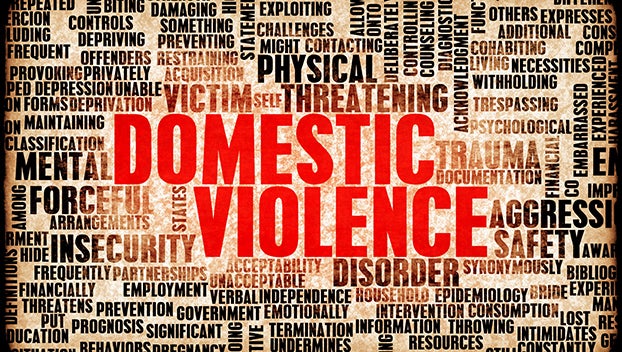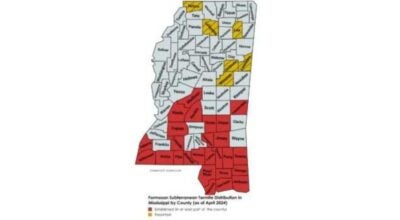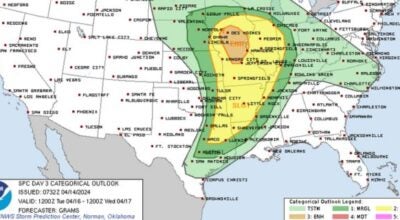Isolated, alone and afraid, rural Mississippi domestic abuse victims endure
Published 6:23 am Monday, October 3, 2022

- Domestic Violence and Abuse as a Abstract
By Madison Hahamy
Mississippi Center For Investigative Reporting
Living in a small Mississippi River town, Hayden endured her husband’s cruelty, adhering to the belief that domestic abuse is something to be hidden from the broader community and kept within the confines of the household.
That mindset is frequently found in rural communities, where domestic violence often goes unchecked not only because of that belief but also isolation, lack of transportation, and access to resources and a support system.
Hayden, who asked to go by her last name for safety concerns, grew up with her parents and two brothers in the type of town where “everybody knows everybody.” After Hayden’s mother died young, she was raped multiple times — she would not say by whom — which, she said, caused years of self-hatred that led to her entering unhealthy relationships.
Hayden’s first marriage, in her early 20s, lasted six months, and her next relationship, in Illinois, was emotionally and mentally abusive. When she returned to her Mississippi home, she met her second husband, who convinced her to quickly marry in Memphis. The marriage immediately devolved into emotional and physical abuse, she said, often while he was intoxicated.
“Each time he would say he was sorry, and I believed him, but he would always end up doing it again,” Hayden said. “It got so bad that I would have black eyes going to work.”
She said that administrators from her job as a factory worker would try to convince her to leave, but Hayden was committed to staying loyal to her marriage vows.
“I never reported any abuse because I always believed what goes on in a person’s house should stay in the house,” she said.
In such close-knit towns, the stigmatization of domestic violence makes women in those areas more vulnerable to abuse. Compounded with a lack of resources in comparison to more urban areas and the logistical challenges of living in isolated areas, rural women face both increased rates of domestic violence and challenges if they choose to report the abuse.
According to a 2011 study from the Eunice Kennedy Shriver National Institutes of Child Health and Human Development, the most current available on the subject, women in small rural and isolated areas reported the highest prevalence of intimate partner violence (up nearly 23% compared to 15.5% for urban women). Rural women reported significantly higher severity of physical abuse than their urban counterparts. The mean distance to the nearest domestic violence resource was three times greater for rural women than for urban women, and rural domestic violence programs served more counties and had fewer on-site shelter services. Over 25% of women in small rural and isolated areas lived more than 40 miles from the closest program, compared with less than 1% of women living in urban areas.
Hayden’s ex-husband’s abuse escalated when he shot Hayden in the arm with a gun. “He seemed surprised himself that the gun went off,” Hayden said. “I fell to my knees and told him, ‘Wow, you done shot me.’”
Officers arrived at the hospital, she said. “I made up an excuse for him, saying that he was just taking the gun out and it accidentally went off and shot me in the arm. I was protecting him and not thinking about my own feelings. I knew they would arrest him and put him in jail.
Hayden never called the police on her ex-husband — she said it wasn’t an issue of trust so much as that, in her small town, “everybody know everybody.” Sometimes neighbors would hear her and her husband arguing, she said, but they would not call the police, either — instead, they would tell her family members.
Before Hayden’s arm fully healed, he abused her again. The physical violence continued, and Hayden said he convinced her to move to a different, unfamiliar town, away from her friends and family. Hayden left and returned multiple times before, upon returning home, she answered a call from the mother of another woman he was seeing. She confronted him and, after he punched her in the face,she broke a glass, grabbed a shard, and prepared to stab him.
“I was just that angry and wanted to see blood come from him because I had got to a point that I was just tired of him hitting on me,” she said. She held onto the glass so tightly that she cut her finger.
“I do believe now it was God that kept me from cutting him because I would probably be in jail now ’cause of the rage that was in me that night,” Hayden said. The next morning, she called her brother and aunt, who told her to “leave him and never look back,” telling her that her mother “would turn over in her grave” if she knew that Hayden was being abused.
She did, and she married her current husband two years later — the pair have been happily together for 28 years.
‘Everybody Knows Everybody’
Pat Davenport, the executive director of Our House, a rural, community-based domestic violence program in Greenville, Mississippi, is often not hidden as well in the rural community since everyone is so connected, but is instead much more accepted and seen as “a family matter.” Law enforcement officers also, Davenport said, are not trained to be as culturally sensitive as those in more urban areas, meaning they might not handle intimate partner violence well, that survivors should just “suck it up” or that they could easily leave. She also noted that these issues are compounded for women of color or LGBTQ+ women who are already disproportionately affected by domestic violence.
A consequence of the rural connectedness is that law enforcement officials often are related to or know the perpetrators. Sometimes, Davenport said, the abuser might be a law enforcement officer, as well.
Regan Hadaway, police chief in Raymond, Mississippi, acknowledges that those on the force have “certainly known previously people who have been involved in domestic violence situations.”
He said domestic violence calls are relatively infrequent, sometimes occurring months apart, potentially pointing to the reluctance to report.
Davenport also said, while there might be a culture of connection and closeness within rural communities, there also can be isolation. Rural communities often have less resources than their urban counterparts, Davenport said, which means that some homes might not have Internet access and women may struggle to know what resources are available. If the nearest home is acres away, then neighbors might not be aware of what is happening.
A Lack Of Resources
Wendy Seals, executive director of Angel Wings Outreach Center, a shelter and domestic violence support center in Mendenhall, Mississippi, said they have served victims who don’t even have cell phones.
“They pretty much rely on a family person to help them,” she said.
Hayden’s experience, in which her abuser moved her to an area isolated from friends and family, is a common abusive tactic in rural communities, Davenport said, as they can sever those connections to the people who might be able to intervene.
“If there are no neighbors close to her, if [the abuser] stops her from going to the grocery store, churches, those are places where people can observe and inform a survivor that there’s help out there,” she said.
On a more logistical level, someone who is trying to escape abuse in a more rural area also is faced with infrastructure barriers. For example, the nearest shelters are often further away, serving many rural areas at once. High gas prices can deter survivors from driving to shelters, and shelters and domestic violence programs often lack the funds or resources to transfer survivors directly. Our House recently relocated a survivor to a shelter five hours away, which cost $450 in transport — often a prohibitive amount, and something that cannot be done regularly. It only has five employees, meaning one person can work with as many as 40 clients in a two-month period.
Seals said the rural areas they serve encounter similar obstacles stemming from a lack of services.
“If a child is molested, they have to go to Jackson, [which is] like 40 miles away,” she said. “Physicians don’t come down to us, we have to go to them.”
Organizations and shelters are not the only ones that lack resources.
Anthony Shelvy, a social worker at Jefferson Healthcare Center in Fayette, Mississippi, said the center has few resources for helping the domestic violence victims it sees. Located in southwest Mississippi, the county has a population of less than 8,000, almost 40% of whom live below the poverty level.
“We don’t have as many resources as other counties,” Shelvy said. “Natchez has a safe house, and I know they service this area, also, but it’s a drive. I wish we had the resources and have those people that want to put in the efforts.”
Shelvy said the health center sees very few domestic violence victims, since most people would go to the emergency room instead. But he said, if it had more resources and counseling abilities, it might be able to help more people. For example, he noted,the county’s crime victim agency, which focuses on domestic violence, has only two people to cover the entire county. But, Shelvy, noted “[just] two people [are] working for a [527 square mile] county that really has no resources to combat the issue.”
He added that the area also lacks housing and healthy food. Having those resources, as well, could help promote better living and therefore counteract cycles of violence.
“We have the buildings, we just need efforts,” Shelvy said. “If I knew how to do it, I would.”
This story was produced in partnership with the Community Foundation for Mississippi’s local news collaborative, which is independently funded in part by Microsoft Corp. The collaborative includes MCIR, Mississippi Today, the Clarion Ledger, the Jackson Advocate, Jackson State University and Mississippi Public Broadcasting.
The Mississippi Center for Investigative Reporting is a nonprofit news organization that seeks to inform, educate and empower Mississippians in their communities through the use of investigative journalism. Sign up for our newsletter.





